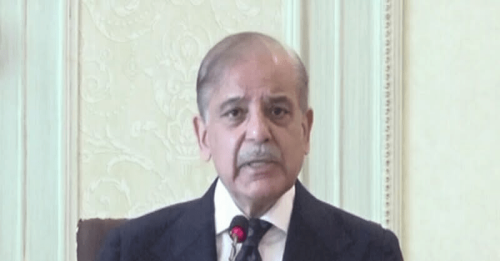NEELUM VALLEY: The thick forests of the Neelum valley have become accustomed to absorbing the deafening sound of mortar shells. A 70-feet-wide stream in the Kesariyan village, near the Line of Control, separates Azad Kashmir from India-held Kashmir. While speaking to locals about the recent skirmishes between India and Pakistan at the LoC, I realise that since we are just 200 feet from the Indian Army’s check-posts, we are under the watchful eye of its soldiers. Such is life in the valley.
Mohammad Akseer Butt, a resident of the valley, takes me back to the violence that gripped the valley during the 1990s. He recalls that in those days, an unknown number of people died, hundreds lost their limbs and property worth millions of rupees was destroyed. A generation of Kashmiris was left uneducated and a crippling sense of paranoia found root in a peaceful valley.
The residents of the valley, he narrates, have still not forgotten those horrific episodes. With tensions escalating, uncertainty has once again gripped the 144-km-long, bow-shaped valley. “Even the thought of shelling and cross-border fire has us trembling with fear,” says Butt. “We do not want another decade of unrest.”
Raja Sohail is another fearful local. According to his calculation, the main road going through the valley falls within the range of Indian guns and can be cut off in case of shelling. This would sever all road links between Muzaffarabad and the rest of the valley, leading to a shortage of supplies and increase in prices of edibles.
Sohail’s fears are not unfounded. He says people of the valley faced food shortages for weeks during the previous bouts of cross-border tensions.
“We do not want miserable deaths. We want India and Pakistan to peacefully resolve the Kashmir dispute so that we can live normal lives.
“People living on the two sides of the LoC have a common way of life, language, culture, economy, and even poverty. There are hundreds of families who have blood ties on the other side, but are separated by the fence,” he says.
I continue walking through the lush valley in search of more stories about life in what seems to be the world’s most scenic conflict zone.
I stop a group of boys walking to college and have a chat with them. Raja Pervez is eager to speak to me. He says he missed out on his primary schooling due to the shelling. “I grew up amidst the bang of artillery shelling. Once again we are facing the same situation. I couldn’t attend school as all educational institutions were closed during those times.”
The recent escalation of violence in the valley has forced Pervez into thinking about his survival once again.
“Now I will wait and see for another two or three days. If things don’t get any better, I will leave Keran sector with my family and move somewhere else because I don’t want my children to grow up the same way as I did,” he says. His friends nod in agreement.
Further down the road, a beautifully designed mansion catches my eye. What may once have been an impressive structure shows signs of ruin. I speak with its owner, Raja Nazeeb, over a fragrant cup of Kashmiri chai.
“I have worked for 40 years and got this house constructed with my life’s savings and some loan. If it gets destroyed, I will be left with nothing in my hand. Just one shell is what it will take for my life’s hard work to turn into rubble,” he says.
In Azad Kashmir, there is a general sense of discomfort linked with the military’s presence in an otherwise serene valley. It is, however, an easy relationship where the locals cannot do away with the military’s presence and understand that some form of support from the state is vital for their survival.
Being low on funds, the Azad Kashmir government is in no position to handle the consequences of a serious conflict. If the valley’s residents migrate, it is doubtful that the government will be able to provide shelter and relief to the thousands in distress.
The sentiments of the people of the Neelum valley are as clear as the sound of the waters that flow through those mountains. War is not an option.
As Nazeeb worries for the structural integrity of his mansion, Sohail fears for his tuck shop. And as Pervez hopes to finish his education without delay, there is something common among the residents of the Neelum valley: fear and a rejection of violence.
Published in Dawn, October 4th, 2016















































